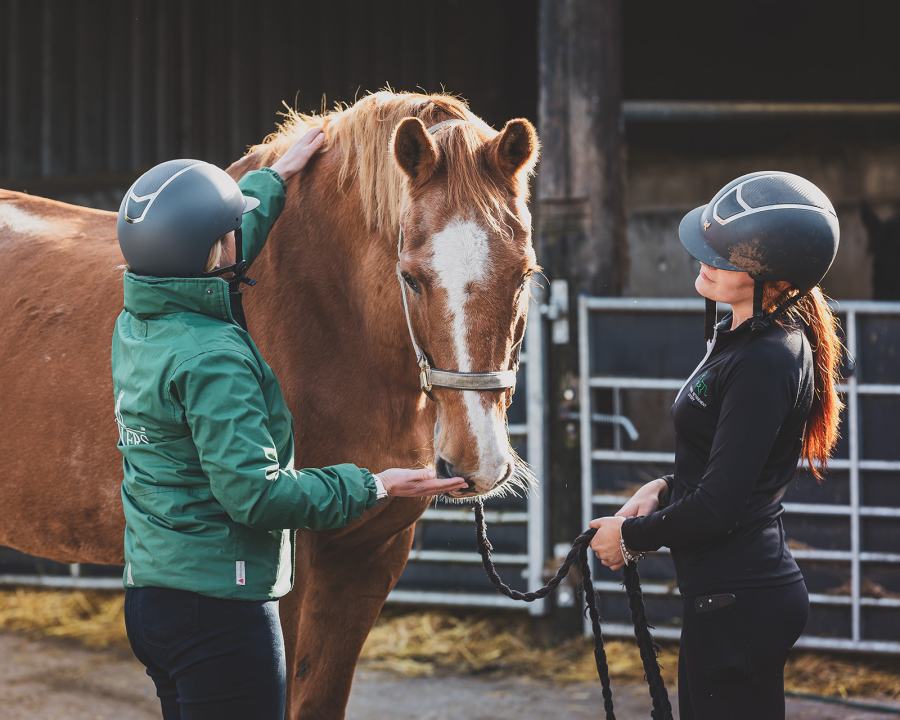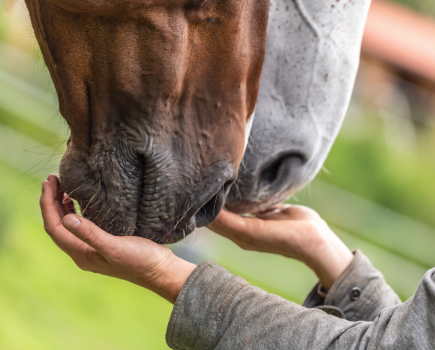In partnership with SPILLERS™
The equine population, much like our own, is ageing and just like their younger companions, some senior horses and ponies are prone to piling on the pounds.
Added risks come with obesity in senior horses, and so it is important that as owners we do all we can to keep our ageing companions at a healthy weight.
When do horses become senior?
Age of a horse or pony can be measured in three ways:
- Chronological age
This is simply their age in years. Chronological age can be misleading, as some horses — just like people — age more or less successfully. - Physiological age
This uses markers of ageing and is perhaps the most accurate way to measure ageing, but this whole area is still being researched. - Demographically
Another way to look at age is demographically; the age at which there is 25% survivorship within the overall population.
Changing perceptions of when old is old
Whichever way you measure age it’s highly individual, with most owners using a combination of chronological and physiological age to ‘judge’ whether their individual horse is old and needs a change in feed and/or management.
That said, what most horse owners consider to be old has shifted to the right over the last few decades.
In a 2024 Senior Horse Survey carried out by Spillers, which was completed by 2,212 owners/carers in the UK, 65% of respondents said they didn’t consider their horse to be old until they had reached 20 years of age — and this number may be even higher in ponies.
Added risks of obesity in seniors
Equine obesity comes with a host of health and welfare risks for any horse, but may have additional consequences for seniors.
One of these is exacerbating ‘inflamm-aging’. This term is used to describe chronic low-grade inflammation that occurs in association with ageing.
In one study, a reduction in fat and bodyweight in senior horses resulted in reduced levels of inflammatory cytokine (molecules that promote inflammation) in the blood. In contrast, an increase in weight and fat had the opposite effect.
Obesity also increases joint strain and may exacerbate difficulties regulating body temperature that can occur with ageing in horses.
Providing a balanced diet for seniors
Balancers are ideal for seniors that maintain weight easily (or too easily!) on forage alone. Unlike vitamin and mineral supplements, balancers provide amino acids to help support muscle and topline as well.
Senior horses may benefit from a diet that provides sufficient levels of vitamins and minerals for working horses, even if they are retired.
Balancers designed for seniors may contain higher levels of some vitamins and minerals versus those aimed at maintenance or light work, as well as added functional ingredients such as joint support.
Having said that, balancers (and other feeds) don’t necessarily need to say ‘senior’ on the bag to be suitable. For example, if your senior slimmer is already on a balancer designed for those on a calorie-restricted diet, this may continue to be a suitable option.
If you think it would be beneficial, additional joint support can always be provided separately in the form of a supplement.
Weight and body condition
Senior horses prone to weight gain may need some form of forage restriction, especially at certain times of year, although some commonly recommended strategies may not be suitable.
For example, arthritis in the neck may make pulling hay from a net uncomfortable and feeding straw as a partial forage replacer may not be suitable for those with dental issues.
Monitoring your senior’s weight and body condition regularly is just as important as it is in younger horses.
When assessing their body condition score remember:
- A lack of muscle mass may be mistaken for a lack of fat.
- ‘Softer’ muscle in senior or unexercised horses may be mistaken for excess fat.
- Those with PPID (Cushing’s Syndrome) may have large regional fat deposits in areas such as the crest or loin despite being thin overall.
In these situations, body condition scoring systems should be used with caution. Speak to a nutrition advisor for more advice.
The body condition index can be a useful way of identifying excess weight if you’re unfamiliar with or less confident in body condition scoring. However, it’s not suitable for those with a pot belly (which can occur in some horses with PPID).
Remember: horses can be in good or overweight condition but under muscled!
Muscle matters
Many owners report that their older horse has lost muscle tone, but this observation may not be a direct effect of ageing. In fact, a reduction in exercise may have a greater effect on muscle tone than ageing per se.
While some degree of muscle wastage may occur with ageing, it can also be caused by lack of exercise, malnutrition, injury, poor saddle fit, some forms of tying up and certain other conditions.
Muscle wastage can affect health and welfare in a number of ways, including a reduced ability to work or even simply getting up after laying down.
Contact your vet if you notice your horse has lost muscle, especially if it seems sudden or severe as this may be a sign of injury or disease, particularly if there have been no changes in work or diet.
It’s important not to assume muscle wastage is ‘just part of the ageing process’, as it may be due to something that can addressed, such as saddle fit, or treated.
Main image © Spillers
For advice about how to help your senior horse or pony keep their waistline in check, you can contact the SPILLERS Care-Line on 01908 226626 or visit www.spillers-feeds.com.








